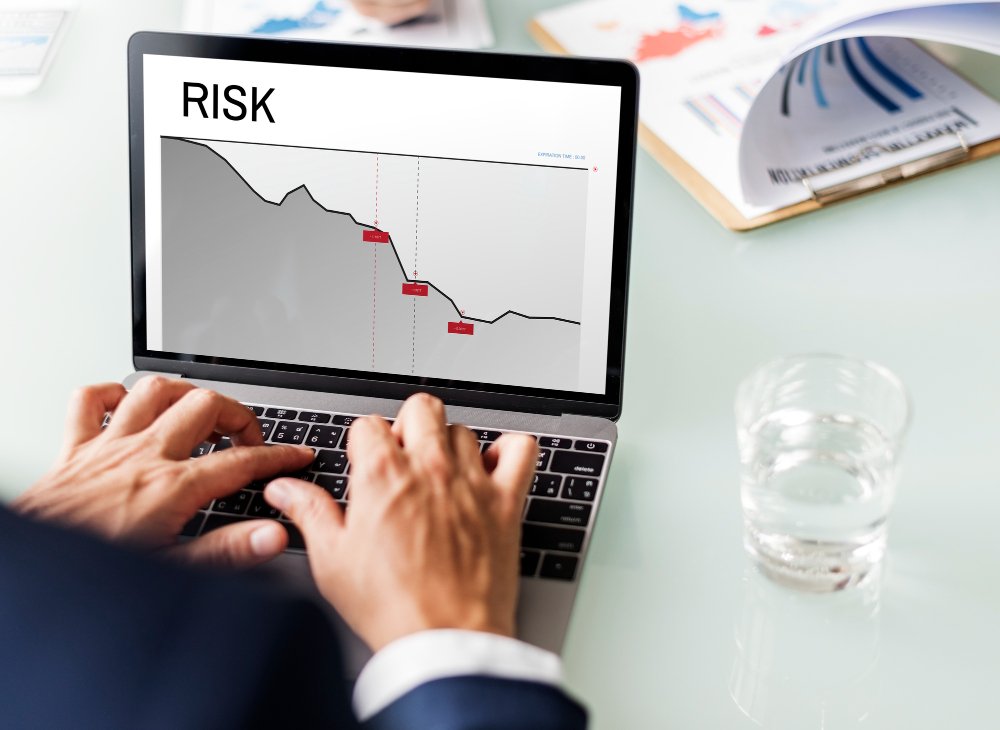Last updated on April 5th, 2024 at 10:54 am
The significance of financial risk management cannot be stressed in Today's rapidly changing corporate environment when innovation reigns supreme and change is the only constant. It's not merely a catchphrase to dazzle investors or a supplemental business plan for the Fortune 500.
It is the foundation of long-term progress, the keeper of your hard-earned money, and the barrier between your aspirations and the precipice of financial disaster. But don't worry; we won't drown you in a sea of complicated financial terminology or boring you with countless spreadsheets. Rather, we are here to serve as your co-captains on this adventurous journey.
This post will explain financial risk management's intricacies, examine its significance in Today's fast-paced corporate world, and arm you with the information you need to effectively navigate your ship over the turbulent seas of economic instability.
Why is Financial Risk Management important in Today's business landscape?

The skill of anticipating the future and evading bullets is financial risk management. It involves identifying the risks that might hurt your company, evaluating their impact, and developing a mitigation strategy.
Credit risk, operational risk, and market risk are the three primary categories of financial risk. Operational risk is the chance that something bad may happen to your company, such as a data breach or a cyberattack. Credit risk is the possibility that your consumers won't pay you back. On the other hand, market risk is the chance that the value of your investments may decline.
Businesses and organizations must handle financial risk. It entails identifying, analyzing, and reducing risks that could impact the financial side. Businesses must first identify the various risks to achieve this. Market, credit, liquidity, operational, legal, and regulatory risks are a few of these.
They must consider the state of the economy, interest rates, currency rates, and volatility to manage market risk. Assessing credit risk involves determining the likelihood that clients or partners won't pay. Making sure there is enough cash flow for immediate commitments ensures liquidity risk.
Internal procedures, malfunctioning systems, fraud, and human mistakes are all included in operational risk. Legal and regulatory risk entails following applicable rules and regulations and adapting to changes.
Effective financial risk management requires proactive monitoring and control. This entails putting internal controls in place, conducting risk analyses, creating backup plans, and continuously scanning the environment for threats.
Long-term success depends on a solid understanding of financial risk management. Business owners may maintain their viability by controlling risks and taking wise decisions. If they don't, they can miss out on development opportunities and put their lives in grave danger.
Role of Financial Risk Mitigation in Today's Ever-Changing Business Landscape
Businesses must consider risk control strategies while making choices. It comprises identifying, assessing, and minimizing potential risks to ensure a company's financial stability. Businesses may protect their assets and increase profits by managing financial risks appropriately.
Risk Mitigation in Finances is more important than ever in the modern world. Businesses confront financial hazards, including market, credit, liquidity, and operational risks. These risks may result from alterations in the market environment, client defaults, problems with cash flow, or flaws in internal processes.
Financial risk management aims to assess the risks and develop strategies for effectively managing them. This entails lowering the likelihood of future losses and dispersing assets to lower overall risk. Financial risk managers use sophisticated modeling methods and difficult tools to analyze the financial performance of various scenarios.
Furthermore, by identifying areas where resources might be distributed more wisely, financial risk management helps organizations improve their capital allocation. Organizations may make decisions that optimize profits while limiting possible losses by being aware of the risks associated with various investment opportunities.
Businesses should regularly examine and update their risk management plans to improve the efficiency of financial risk management. Since market conditions and business climates always shift, firms must proactively identify and mitigate new risks.
Risk management tools and technologies
The skill of financial risk management acts as your steadfast protector in the constantly changing world of business, where fortunes can rise to astounding heights one second and crash the next. Imagine it as an advanced GPS for your ship in the huge ocean of trade, navigating you through the choppy waves and keeping you away from hidden rocks so you may reach the desired shores of riches.
Let's not venture too far out at this time, though. Discover the financial risk assessment tools and technology illuminating the road to success as we dive into the core of this compass for corporate survival.
-
Risk Assessment Software: Your Crystal Ball in the Digital Realm
Imagine this program as your modern-day crystal ball, penetrating the depths of your business's finances to foresee impending storms before they form. These technologies examine big datasets, historical patterns, and market indicators to find weaknesses and forthcoming threats. They act as a telescope to help you see the impending storm of market turbulence or the deceptive tidal wave of an economic slump.
-
Utilizing Scenario Analysis Tools to Explore the "What Ifs"
Scenario analysis tools prepare you for numerous business situations, much like an experienced captain does for various weather circumstances. They model several "what if" scenarios—imagine them as simulations of alternate realities—to determine how your company would perform in certain situations. This allows you to make wise judgments regardless of the wind blowing.
-
Artificial Intelligence and Machine Learning: The Wise Oracle
Consider having an astute oracle onboard your ship who can foretell the ups and downs of the market. That is the function of artificial intelligence (AI) and machine learning (ML) in contemporary risk management.
With the help of these tools, which explore patterns and connections that the human eye would overlook, we can make strategic decisions and risk assessments that are more precise.
-
The Immutable Ledger of Blockchain Technology
Imagine blockchain as the permanent record of your ship's voyage. By ensuring clear and secure record-keeping, this technology helps to reduce fraud and mistakes. It lessens the likelihood of financial irregularities and fraud by keeping a tamper-proof log of financial transactions.
-
Cybersecurity and Data Encryption: Securing Your Ship
Protecting your financial data is analogous to defending your ship against pirates in the digital age. The fortress walls, protecting your sensitive information from potential intrusions, are data encryption and cybersecurity solutions. They ensure your financial transactions are private and secure from online dangers.
Mastering the art of financial risk management in Today's corporate environment necessitates a toolset that combines technological skill with strategic finesse. These tools serve as your dependable crew, helping you to navigate the choppy waters of trade.
These tools, which include scenario analysis and AI-driven insights, help you find your way ahead and transform the currents of opportunity into the currents of uncertainty. Therefore, remember that these instruments are the sails that capture the winds of invention, driving you towards the shining shores of commercial success as you set sail for the horizon of success.
The Final Words
A sensible business leader shouldn't enter the world of commerce without having a sound risk management plan, just as an experienced sailor wouldn't leave the protection of the port without their compass and navigational aids.
Remember that the currents of uncertainty can cause even the most experienced captains to veer off course due to the constantly shifting winds of change. However, you stand prepared to confront whatever comes your way with the understanding of risk assessment tools, scenario analysis, AI insights, blockchain technology, and cybersecurity.
The Advanced Management Programme in Financial Services and Capital Markets from Imarticus Learning will provide you with a thorough understanding of digital banking, capital markets, risk management, and fintech industries. IIM online course explores important topics, including corporate finance, valuation, capital raising, treasury operations, and financial analytics in partnership with IIM Lucknow.
It seeks to revitalize careers and enable a smooth transition into senior management roles. It is tailored to empower successful middle management professionals. So, whether you're an aspiring entrepreneur launching your maiden voyage or a seasoned business tycoon navigating the vast oceans of commerce, heed the call of effective financial risk management.
Accept it as your dependable comrade, nighttime guide, and bulwark of fortitude in adversity. You may set your course for prosperity on the far beaches of success, just as a well-prepared sailor confidently braves the broad waters.












